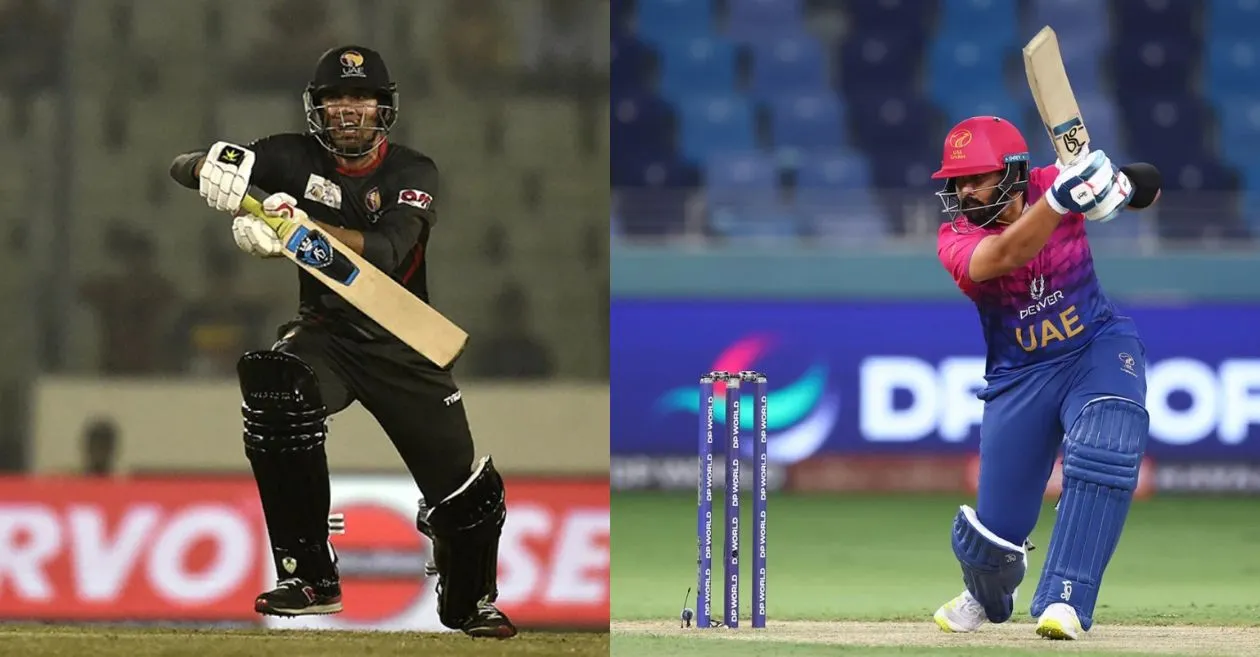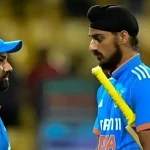As the Asia Cup 2025 unfolds under the bright lights of Dubai, one stark reality continues to haunt associate nations — the struggle to withstand high-quality bowling attacks from the world’s cricketing elites. And among these emerging teams, the United Arab Emirates (UAE) has etched its name into an unwanted chapter of the tournament’s history: recording three of the five lowest team totals ever witnessed in the T20I format of the Asia Cup.
In what has become a recurring tale of promise undone by relentless bowling, the UAE’s recent collapse to 57 all out against India on September 10, 2025, reignited memories of similar past meltdowns. Let’s take a deep dive into the five lowest totals in Asia Cup T20I history and understand what they say about the competitiveness gap, pressure handling, and evolution of associate cricket.
1. Hong Kong – 38 vs Pakistan (September 2, 2022, Sharjah)
The nadir of T20I batting in Asia Cup history belongs to Hong Kong, who crumbled for a paltry 38 against Pakistan in Sharjah. Chasing a mammoth 193, Hong Kong’s innings lasted just 10.4 overs, leaving fans stunned.
- Top scorer: Yasim Murtaza (8)
- Key bowlers: Shadab Khan (4/8), Mohammad Nawaz (3/5)
- Extras: 10
- Match result: Pakistan won by 155 runs
Shadab and Nawaz spun a web around the Hong Kong lineup, with no batter crossing double digits. The stark contrast in class between the two sides was evident, and the total remains the lowest ever in Asia Cup T20I history.
2. UAE – 57 vs India (September 10, 2025, Dubai)
Just three years after Hong Kong’s nightmare, UAE delivered their own disastrous batting display — this time at home. Hosting India, the UAE started brightly at 26/0 but quickly succumbed to the guile of Kuldeep Yadav and the precision of Jasprit Bumrah.
- Top scorer: Muhammad Waseem (19)
- Key bowlers: Kuldeep Yadav (4/7), Bumrah (2/10)
- Final score: 57 all out in 13.2 overs
- Match result: India won by 143 runs
The match exposed UAE’s fragile middle order and inability to navigate spin under pressure. Kuldeep’s three-over spell was surgical, and once the collapse began, there was no turning back.
3. UAE – 81/9 vs India (March 3, 2016, Mirpur)
Another haunting entry for UAE came in 2016, where they could only manage 81/9 against India despite batting the full 20 overs. The innings saw a glimmer of resistance from Shaiman Anwar but lacked any meaningful partnerships.
- Top scorer: Shaiman Anwar (43)
- Key bowlers: Bhuvneshwar Kumar (2/8), Jasprit Bumrah (1/11)
- Match result: India won by 9 wickets
Despite seeing off the entire quota of overs, UAE’s failure to accelerate at any point reflected their cautious, and eventually ineffective, approach against India’s well-rounded attack.
4. Pakistan – 83 vs India (February 27, 2016, Mirpur)
In a rare blemish for a cricketing giant, Pakistan’s 83 all out against India remains the lowest Asia Cup T20I total by a Full Member nation. The pressure of a high-octane clash got the better of their seasoned batters.
- Top scorer: Sarfaraz Ahmed (25)
- Key bowlers: Hardik Pandya (3/8), Ravindra Jadeja (2/11)
- Match result: India won by 5 wickets
The innings unravelled due to poor shot selection and two run-outs, as India’s bowlers maintained a stranglehold from start to finish.
5. UAE – 82 vs Bangladesh (February 26, 2016, Mirpur)
A day before their 81/9 against India, UAE had already suffered another batting implosion. This time, Bangladesh’s disciplined bowling attack never allowed them to get going.
- Top scorer: Muhammad Usman (30)
- Key bowlers: Mahmudullah (2/5), Mashrafe Mortaza (2/12)
- Match result: Bangladesh won by 51 runs
The back-to-back failures in Mirpur painted a bleak picture of UAE’s T20 credentials at the time and foreshadowed their future struggles in the Asia Cup.
UAE’s Hat-Trick of Humiliation: A Pattern of Collapse
Appearing three times in the top five lowest scores is not merely coincidence — it’s symptomatic of deeper structural issues. While UAE’s cricket has undoubtedly developed, their consistent failures under pressure reflect a lack of experience against elite bowling attacks.
Even with recent improvements, such as competitive matches in ICC Qualifiers and bilateral series against stronger nations, UAE’s tendency to fold under high-stakes situations remains a major roadblock in their cricketing journey.
Their 2025 collapse was particularly eye-opening. Playing on home soil, in conditions they know well, UAE couldn’t handle India’s second spell attack. The moment Kuldeep came on, the lineup unraveled. Wickets fell in heaps — 26/0 turned into 57 all out, a freefall symbolic of a deeper psychological barrier.
What These Collapses Reveal About Associate Nations
Asia Cup’s T20I format was designed to provide associate nations with greater exposure, but it has also laid bare the sharp divide between them and Full Members. The factors contributing to these one-sided collapses include:
- Lack of exposure to elite bowling in high-pressure environments
- Insufficient depth in batting lineups
- Limited access to international-quality training facilities
- Tactical naivety against pace-spin combinations
Despite heavy investments in global cricket development programs by the ICC, associate nations continue to struggle with consistency at the top level.
Turning the Tide: What UAE Needs
For the UAE to shed this unwanted reputation, a multifaceted approach is required:
- Elite Coaching Access – Regular mentorship from international-level coaches
- Quality Match Practice – More bilateral series against Test nations
- Mental Conditioning – Building resilience for pressure scenarios
- Youth Investment – Developing U-19 and academy-level infrastructure
Improvement is not linear, and setbacks like these could serve as wake-up calls if approached constructively.
From Collapse to Comeback?
As we reflect on the top five lowest totals in Asia Cup T20I history, one truth stands out: the journey from associate to elite status is steep and unforgiving. For UAE, the road has been marred by spectacular collapses, but the future still holds promise.
The presence of players like Muhammad Waseem and the rise of a semi-professional domestic league have laid a foundation. What’s now needed is strategic patience, better match exposure, and stronger bench strength.
Whether these lows will be used as motivation or remain cautionary tales depends entirely on how the UAE cricket board responds in the coming years. Until then, the top five lowest Asia Cup T20I scores will remain a stark reminder of cricket’s harshest lessons — taught not by defeat, but by collapse.
Please check for information on the best betting sites in India – https://selectory.org/best-betting-sites/















